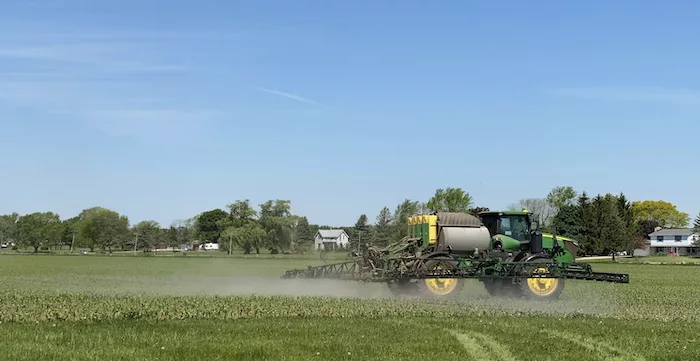Brock Waggoner is the northern sales agronomist for Helm Agro, a 122-year-old company that offers a suite of herbicide and crop protection products for United States growers.
In Waggoner’s view, strip-till is a “progressive way of farming, because you're trying to use Mother Nature to her advantage,” he says. “But at the same time, you should make sure that you’re providing the best opportunities for those seeds.”
Advance planning — on everything from seedbed preparation to choice of crop protection products and how those products will be used in the field — can help set the stage for optimum performance.
Below, Waggoner offers tips for making the most of herbicides in strip-till systems this season.
1. Identify problem fields
Target specific problem areas with an aggressive weed control program, rather than deploying a watered-down version of the strategy across your entire operation, says Waggoner. “Sometimes it pays to spend 15 bucks on this extra acre here on this third-year farm that you know that you've got problems with,” he says.
2. Order products early…
When supply chain issues and inflation keep herbicide prices high, it pays to talk to retailers as early as possible to lock in a program, says Waggoner. “If you're talking about it now, you'd be amazed how much you're going to get when it comes time to plant.”
3. …But be flexible
Be open to alternative products, especially when supply constraints limit herbicide options or drive up prices. According to Waggoner, combining multiple active ingredients to the tank can keep use rates down and add value to your program. One such option is Helm’s new broadleaf burndown herbicide Reviton, which contains the active ingredient tiafenacil.
4. Include a product with residual activity
“Every one of my recommendations has residual products in there,” says Waggoner. “That's part of that's part of what makes this work. Even if you've got those cover crops, as you do that termination event on your cover crops, you’ve got to come in and have that residual.”
5. Use the right water volume and temperature
Especially when weeds are large, it’s a mistake to lower water volume rates, says Waggoner. Read the label and stick to label rates–or risk having to do a second pass.
When building tank-mixes, refer to labels for temperature guidelines to make sure you create a solution that won’t clog your nozzles.
6. Spray at the right time of day…
For products like glufosinate, which work by inhibiting photosynthesis, head to the field between 10am and 5pm. If possible, spray products like these on a sunny day.
7. …And pay attention to environmental conditions
It’s common knowledge that spraying during a windy day can lower efficacy and increase the risk of off-target effects. But Waggoner says producers should be careful of dusty conditions, too. If there’s a lot of dust on your plants, chemistries may be less effective.
8. Pay for a post-emergent option when necessary
“Sometimes it pays to pay that extra 10 bucks per acre to go out and spray a post-emergent product for killing the weeds that are up, because you'd be amazed how many weeds will come up in a week, start going into [their] reproductive stage by week two, [and] by week three or four, they've already replenished the weed seed bank that you've been managing for the last three years,” he says.
9. Don’t rule out a mechanical solution
In some places, mowing, crimping, flaming or using a mechanical weed seed destructor have been effective. As data continues to roll in, these options are getting more viable for commercial producers, says Waggoner. “[These are] some things that you may start thinking about as you start talking to your equipment manufacturers,” he says.






